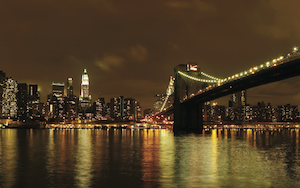Though the 16 American bars on Drinks International’s World’s 50 Best Bars list vary widely in focus – from high-volume cocktail bars such as Trick Dog to high-end hotel cocktail bars such as Elephant Bar at the Nomad Hotel to whisky bars Canon and Dead Rabbit to the molecular mixology mecca that is The Aviary – common trends emerge when we look at them together.
Two drinks to rule them all
In just about every cocktail bar in America, two of the most popular drinks right now are the Old Fashioned and the Moscow Mule. Sean Kenyon, barman/proprietor at Denver’s Williams & Graham, says they are the number one and three sellers respectively. Although consumer favourites, bartenders tend to view them differently.
The Moscow Mule is an entry-level Highball for vodka drinkers, many of whom are more attracted to the shiny copper mug it’s traditionally served in than the beverage itself. At many bars, the menu offers an alternative to the standard with a substitute liquor (Mezcal Mule, Mumbai Mule, etc) to redirect drinkers toward more interesting flavours. At other cocktail bars, including Brooklyn’s Clover Club and New Orleans’ Cure, it is offered on the happy hour menu, perhaps a bit grudgingly. Julie Reiner, owner of Clover Club says “We’ve had it on our happy hour menu. If you want the Moscow Mule, then here you go.” The era of “the bartender is always right” is clearly over.
The Old Fashioned, on the other hand, derives part of its popularity from the Mad Men TV series but it’s a cocktail that American bartenders seem more than happy to make. The versatile format allows for endless variations with any number of base spirits and accent sweeteners and bitters.
Neal Bodenheimer, co-owner of Cure, says: “We always have one Old Fashioned variation on our menu and it’s not because we feel like we have to, it’s because we want to. And they sell well.”
The Old Fashioned may also indicate the declining trend of the syrupy, excessively bitter drink with three amaros competing for attention in the glass. In a way, the Old Fashioned is like a scaled back or more refined version of this. Kenyon says: “Bitter is becoming an accent again rather than a base. The total focus on bitter liqueurs and overly aromatic everything is going away. Bright with bitter accents instead – playing with each other rather than layering on top of each other.”
Morgan Schick, creative director at Trick Dog, says: “People want leaner, drier drinks than they did a few years ago, especially in San Francisco where there is a heavy trend toward bitter. About a year ago we halved the amount of sugar in our Old Fashioned.”
More fortified wines
On the opposite side of the coin, and perhaps also a self-correction for all the Old Fashioneds, is the rise in lower-alcohol drinks. “I’ve noticed over the past year the increase in low-abv drinks being an acceptable thing on menus – and a necessity. Before, if it wasn’t a strong, boozy, stirred and bitter drink people didn’t want it,” says Reiner.




